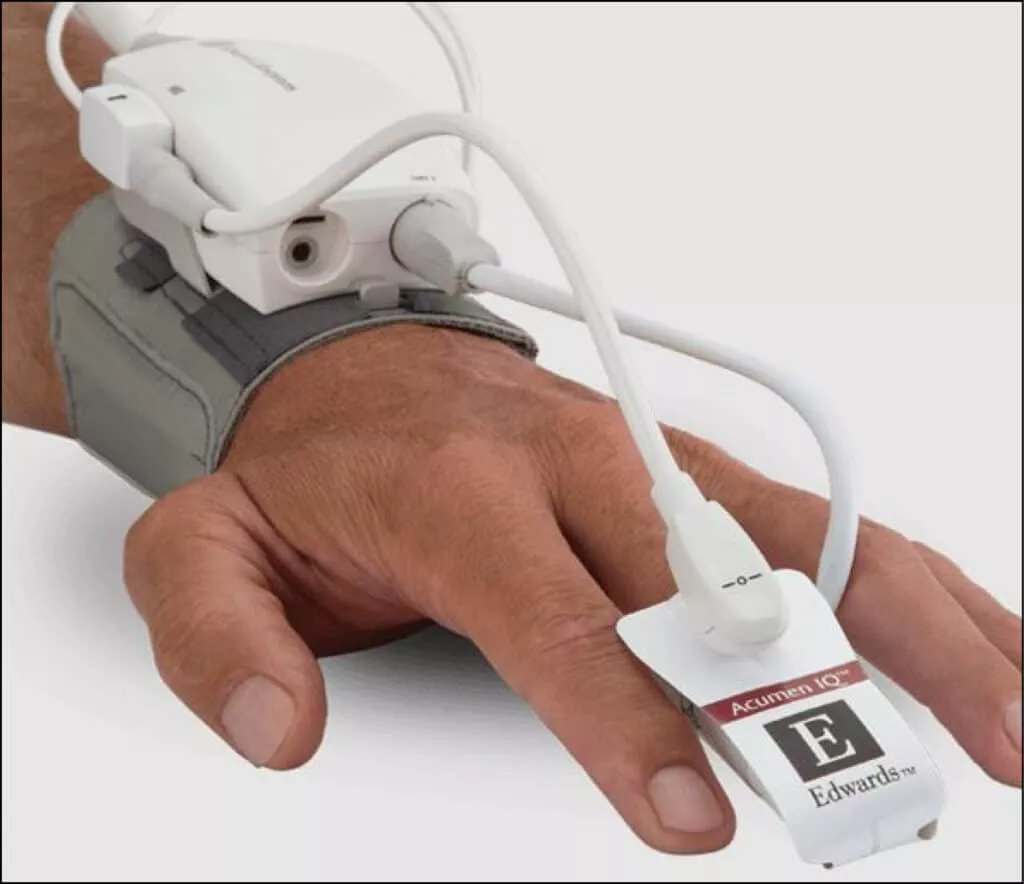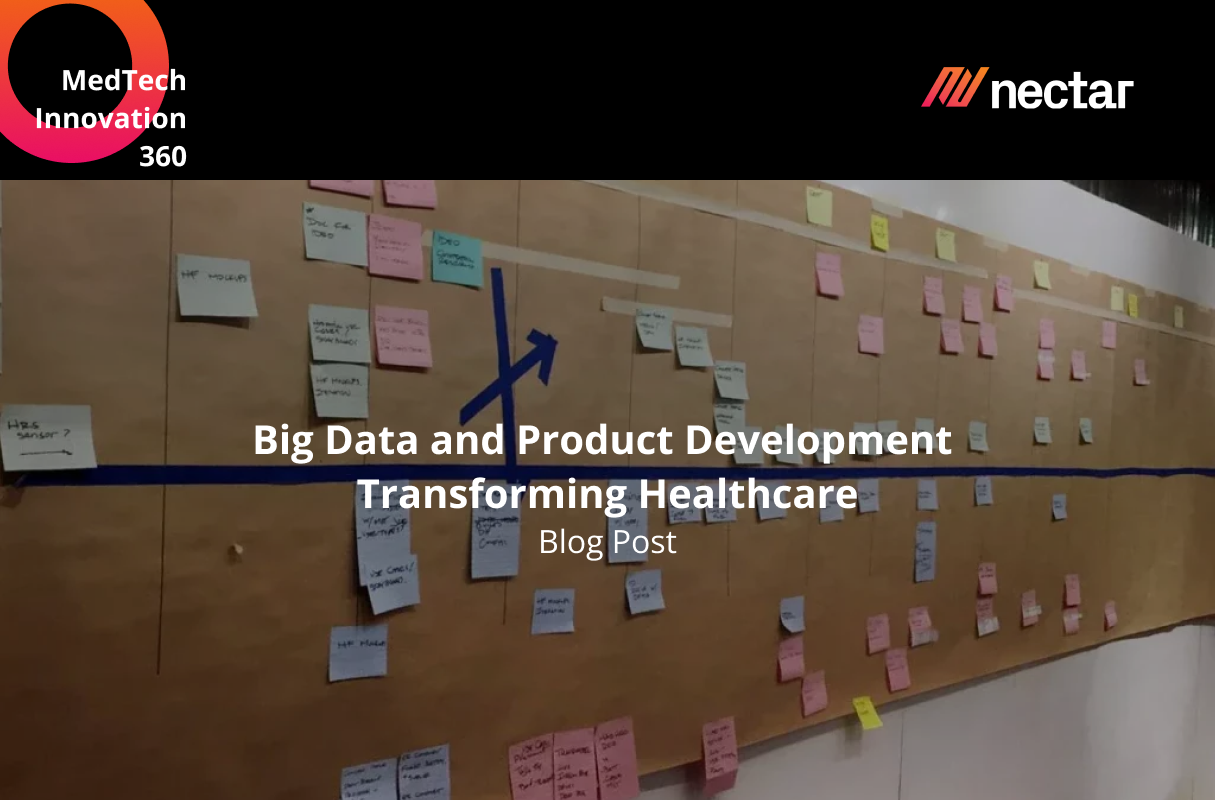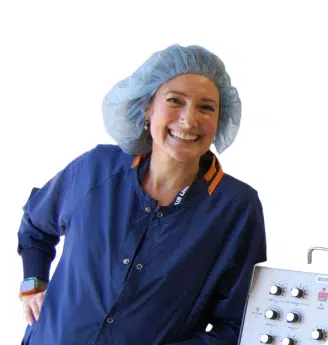Introduction to the IEC 60601-1 Medical Device Standard
The IEC 60601-1 is a globally acknowledged benchmark that establishes critical guidelines for medical device design safety and performance. Recognized as the ‘General Requirements for Basic Safety and Essential Performance,’ this standard is pivotal in driving medical device developments and ensuring the dependability of medical equipment design.
Utilized in healthcare environments, the IEC 60601-1 standard is integral to the medical device design and development process. This article will explore the various facets of designing medical devices in accordance with the IEC 60601-1, including its significance, core stipulations, evaluation and certification procedures, prevalent challenges and misconceptions, advantages of adherence, strategies for ensuring compliance, the significance of risk management, and the resources and tools at one’s disposal. By the conclusion of this discourse, readers will possess an exhaustive insight into the IEC 60601-1 and its role in the development of medical devices.
Importance of Compliance with the IEC 60601-1 Standard
Adherence to the IEC 60601-1 standard is paramount for manufacturers, healthcare practitioners, and patients. This benchmark is instrumental in certifying the safety and efficacy of medical electrical equipment, diminishing the likelihood of injury to both patients and medical staff. By meeting these criteria, manufacturers validate that their medical device designs and developments are executed to conform to the most stringent quality protocols. This commitment not only bolsters patient safety but also facilitates regulatory endorsements and broader market penetration for medical product design.
For healthcare providers, the IEC 60601-1 standard is a hallmark of safety and dependability in medical device design and development. It guarantees that medical devices satisfy essential electrical, mechanical, and functional standards, thereby reducing the risk of device failure or mishaps. Compliance also streamlines the acquisition process, enabling healthcare providers to give precedence to devices that align with the IEC 60601-1 standard, thus ensuring uniformity in medical product development and equipment quality across various medical institutions.
Key Requirements of the IEC 60601-1 Standard
The IEC 60601-1 standard details an extensive array of stipulations, addressing multiple dimensions of medical device design and engineering. Key requirements encompass electrical and mechanical safety, ensuring that devices are devoid of electrical risks like shock or burns and are structurally sound and hazard-free. Medical equipment design must also adhere to these rigorous standards to ensure comprehensive safety and functionality.
Radiation safety is a vital component for devices that generate ionizing or non-ionizing radiation, including X-ray and laser apparatus. The IEC 60601-1 standard mandates precise criteria to confirm that emitted radiation remains within secure thresholds, safeguarding both patients and operators. In the realm of medical device design and development, software safety is equally critical, with the standard prescribing stringent protocols for software creation, verification, and validation to certify its reliable operation and mitigate associated risks.
The IEC 60601-1 standard’s usability requirements are centered on the user-friendliness and interface design of medical devices. It underscores the necessity for lucid instructions, intuitive controls, and effective feedback systems to enable secure and efficacious device usage. These guidelines are among the many pivotal requirements delineated by the IEC 60601-1 standard, and it’s imperative for manufacturers to fully grasp and adhere to these regulations to guarantee the safety and performance of their medical device designs and developments.
Testing and Certification Process for Medical Devices
To demonstrate compliance with the IEC 60601-1 standard, manufacturers must engage in rigorous medical device design and development, including testing and certification of their medical devices. The testing process involves a comprehensive evaluation of the device against the standard’s requirements, which is a critical phase in medical device design engineering. This typically includes a series of electrical, mechanical and functional tests to ensure that the medical device design adheres to the necessary safety and performance criteria. These evaluations are a cornerstone of medical device design and development, affirming the integrity of medical equipment design.
Manufacturers may opt to execute the testing in-house or collaborate with a medical device development company offering third-party testing laboratory services. Regardless of the approach, adherence to the IEC 60601-1 standard’s testing procedures and protocols is crucial. The testing process may differ based on the medical device’s category and its intended application. For instance, devices with direct patient contact, such as surgical instruments or implantable devices, may undergo more stringent testing than those used externally.
Upon completing the testing, manufacturers can secure certification from a recognized body. This medical device design company or certification body scrutinizes the test reports and other pertinent documentation to confirm that the device satisfies the IEC 60601-1 standard’s requisites. Successful certification allows manufacturers to label their devices with the certification mark, signaling compliance and the high standards of medical equipment design.
Common Challenges and Misconceptions about the IEC 60601-1 Standard
Complying with the IEC 60601-1 standard can present several challenges for manufacturers, particularly in the accurate interpretation and application of its requirements to medical device design and development. The standard’s complexity and technical nature demand a profound comprehension of electrical engineering principles and regulatory standards. To navigate these complexities, manufacturers often require the expertise of professionals specialized in medical equipment design and compliance.
Another hurdle is the dynamic evolution of the IEC 60601-1 standard. As it is periodically updated to integrate new technologies, mitigate emerging risks, and maintain alignment with international regulatory demands, manufacturers must keep abreast of the latest revisions. Ensuring compliance with the most recent version of the standard necessitates ongoing regulatory surveillance and the proactive adaptation of medical device design and development strategies.
Dispelling misconceptions about the IEC 60601-1 standard is also key to successful compliance. A prevalent misunderstanding is the belief that adherence to other electrical safety standards, such as IEC 60950-1 for information technology equipment, guarantees conformity with the IEC 60601-1 standard. Despite potential overlaps, the IEC 60601-1 standard has distinct requirements tailored to medical electrical equipment and must be addressed independently to uphold the principles of medical device design and development.
Benefits of Complying with the IEC 60601-1 Standard
Adhering to the IEC 60601-1 standard, manufacturers showcase their commitment to medical device design and development excellence, boosting their brand’s reputation. This compliance is a gateway to international markets, as it’s a prerequisite for regulatory approvals in numerous countries. Furthermore, it mitigates the risks associated with product recalls and liability claims, safeguarding the manufacturer’s financial interests and reputation in the medical equipment design industry.
Healthcare providers, by complying with the IEC 60601-1 standard, ensure the medical device design they rely on is safe and effective, leading to improved patient care and outcomes. This adherence streamlines the procurement process, allowing providers to focus on medical devices that meet stringent quality benchmarks, thus standardizing medical equipment design quality across various facilities.
Patients are the ultimate recipients of the benefits of IEC 60601-1 standard compliance, which guarantees that medical device design and development prioritize safety. This compliance minimizes the likelihood of device malfunctions and safety incidents, instilling confidence in patients and their families that the medical equipment design adheres to the highest safety standards.
How to Ensure Compliance with the IEC 60601-1 Standard
Achieving compliance with the IEC 60601-1 standard demands a meticulous approach to medical device design and development. Manufacturers must immerse themselves in the standard’s intricacies and appoint a dedicated compliance team, equipped with the necessary resources and training. Consulting with regulatory experts can be invaluable in mastering the medical equipment design requirements and securing compliance.
The medical device design and development process should integrate the IEC 60601-1 standard’s requirements from inception. This involves risk assessments, hazard identification, and the implementation of risk controls. Documenting the compliance journey, including design choices and test outcomes, is crucial. Regular audits and inspections are essential to confirm ongoing compliance and pinpoint opportunities for enhancement in medical equipment design.
A comprehensive quality management system (QMS) is vital, aligning with the IEC 60601-1 standard to cover all facets of medical device design, development, and post-market activities. The QMS should encompass risk management, design control, and supplier management, among other procedures. Conducting regular audits and management reviews is imperative to validate the QMS’s efficacy and foster continuous improvement in medical device design and development.
IEC 60601-1 is a widely recognized international standard that specifies general requirements for the basic safety and essential performance of medical electrical equipment. It is crucial for medical device manufacturers to understand how IEC 60601-1 aligns with other regulatory standards to ensure compliance and market access for their products.
Harmonization with other standards
- ISO 13485: IEC 60601-1 aligns with ISO 13485, which specifies requirements for a quality management system for medical devices. Compliance with both standards is essential for demonstrating the ability to provide medical devices and related services that consistently meet customer and regulatory requirements.
- IEC 62304: This standard addresses the software life cycle processes for medical device software. As medical electrical equipment often incorporates software, compliance with both IEC 60601-1 and IEC 62304 is necessary for ensuring the safety and effectiveness of the software within the device.
- Risk Management (ISO 14971): Aligning with ISO 14971 for risk management is critical for medical electrical equipment. Compliance with both IEC 60601-1 and ISO 14971 ensures that risk management is integrated into the design, development, and production of the medical device.
Global regulatory alignment
- FDA (U.S.): The U.S. FDA recognizes the IEC 60601 series of standards and often requires compliance as part of the premarket submission process for medical devices. Understanding how the requirements of IEC 60601-1 align with FDA regulations is essential for accessing the U.S. market.
- EU MDR: The European Union Medical Device Regulation (EU MDR) incorporates references to IEC 60601-1, emphasizing the importance of compliance with this standard for medical electrical equipment seeking access to the European market.
Risk-based approach
- IEC 60601-1, like many other modern regulatory standards, adopts a risk-based approach to safety. It aligns with the principles of risk management outlined in ISO 14971, emphasizing the identification, analysis, and control of risks associated with the use of medical electrical equipment.
Impact on product development
- Understanding how IEC 60601-1 requirements align with other regulatory standards is crucial for integrating compliance considerations into the product development process. This alignment helps manufacturers streamline their efforts to meet the requirements of multiple standards simultaneously, saving time and resources.
Can Small Businesses Comply with IEC 60601-1?
Compliance with IEC 60601-1, the international standard for medical electrical equipment, can be a challenging task for small businesses. The standard encompasses a wide range of requirements related to the safety and essential performance of medical devices, including risk management, software validation, and documentation. Small businesses may face resource constraints, both in terms of finances and expertise, which can make achieving compliance with IEC 60601-1 a daunting prospect.
However, there are strategies that small businesses can employ to navigate this process. Engaging with consultants or experts in medical device regulations, leveraging open-source resources for guidance, and collaborating with larger organizations for mentorship and support can all be valuable approaches for small businesses aiming to comply with IEC 60601-1. While the journey to compliance may present challenges, it is essential for small businesses to prioritize the safety and quality of their medical devices, ultimately contributing to the well-being of patients and the success of their enterprise.
Penalties for Non-Compliance with IEC 60601-1
Non-compliance with IEC 60601-1, which is the international standard for medical electrical equipment, can result in various penalties and consequences for manufacturers, importers, and distributors. It’s crucial for stakeholders in the medical device industry to understand the potential repercussions of failing to adhere to this standard.
Legal and Regulatory Ramifications
- Market Access Restrictions: Non-compliant products may be denied market access in certain regions or countries, leading to significant financial losses and barriers to market entry.
- Product Recalls: Regulatory authorities have the power to issue product recalls for devices that do not meet the requirements of IEC 60601-1. These recalls can be costly and damaging to a company’s reputation.
- Fines and Penalties: Companies found to be in violation of the standard may face fines and other legal penalties imposed by regulatory bodies, which can have substantial financial implications.
Reputational and Business Impact
- Damage to Reputation: Non-compliance can tarnish a company’s reputation, eroding consumer trust and confidence in their products.
- Loss of Market Share: Consumers and healthcare facilities may opt for compliant alternatives, leading to a loss of market share and competitive advantage.
- Litigation and Liability: Non-compliance can expose manufacturers to legal action and liability claims, further impacting their financial stability.
Mitigation and Compliance Strategies
- Thorough Testing and Certification: Manufacturers should invest in rigorous testing and certification processes to ensure their products meet the requirements of IEC 60601-1.
- Regular Audits and Quality Control: Implementing robust quality control measures and conducting regular audits can help identify and rectify non-compliance issues.
- Stay Informed: Keeping abreast of updates and revisions to the standard is crucial to maintaining compliance and avoiding penalties.
The Role of Risk Management in Complying with the IEC 60601-1 Standard
Risk management is at the heart of the IEC 60601-1 standard compliance, underscoring the need for thorough risk assessments in medical device design. Manufacturers must evaluate potential hazards and the associated harm that could result from the use of their devices, considering all possible scenarios, including malfunctions and misuse, to ensure the safety and reliability of their medical equipment design.
In the realm of medical device design and development, once risks are pinpointed, manufacturers must enforce suitable risk control strategies to diminish the likelihood and severity of harm. This could entail revamping the medical equipment design, integrating safety features, elucidating instructions for use, or instituting software safeguards. Risk control measures should correspond to the risk magnitude and adhere to the ALARA principles, ensuring the medical device design is as safe as feasibly possible.
It is imperative for manufacturers to meticulously document the risk management process in medical device design, which includes the identification of hazards, risk evaluations, risk control strategies, and residual risks. This critical documentation should be persistently reviewed and refined during the medical device design and development phase to guarantee that the device sustains an acceptable risk threshold. Risk management is a continuous endeavor, necessitating regular surveillance and reassessment of risks over the medical equipment’s lifecycle.
Resources and Tools for Understanding and Implementing the IEC 60601-1 Standard
Grasping the IEC 60601-1 standard in medical device design can be streamlined by tapping into a variety of resources and tools. The International Electrotechnical Commission (IEC) offers the definitive text of the standard, which is the cornerstone reference for medical device design and development. Manufacturers are encouraged to acquire this document and immerse themselves in its details, with a keen focus on the pertinent clauses and annexes.
Beyond the official text, an array of guidance documents, webinars, and training sessions are available to deepen the understanding of the IEC 60601-1 standard within the medical device design sector. These educational materials, often disseminated by regulatory entities, industry groups, and consulting firms specializing in medical device compliance, are invaluable for manufacturers aiming to elevate their expertise and secure a thorough comprehension of the standard’s intricacies.
Software solutions can play a pivotal role in the adherence to the IEC 60601-1 standard during the medical device design process. These digital tools can automate compliance facets such as risk management, design control, and documentation oversight, thereby streamlining the compliance workflow, minimizing errors, and boosting efficiency in medical device design and development. Nevertheless, choosing software tools that are both dependable and validated to meet the IEC 60601-1 criteria is crucial.
IEC 60601-1 is a widely recognized international standard that addresses the basic safety and essential performance of medical electrical equipment. In its third edition, the standard includes requirements for risk management and the application of the principles of the risk management process to medical devices. While the standard primarily focuses on the safety and essential performance of medical electrical equipment, the increasing integration of connected technologies in healthcare has raised concerns about cybersecurity.
Cybersecurity Concerns in Healthcare
The integration of connected technologies in healthcare brings numerous benefits, such as improved patient monitoring, streamlined data management, and enhanced treatment options. However, it also introduces new risks, particularly in relation to the security of medical devices and the protection of patient data. Cybersecurity threats in the healthcare sector can have serious consequences, potentially compromising patient safety and privacy.
Addressing Cybersecurity in IEC 60601-1
Recognizing the evolving landscape of healthcare technology, the third edition of IEC 60601-1 has incorporated specific requirements to address cybersecurity concerns related to medical electrical equipment. These requirements aim to mitigate the risks associated with potential cybersecurity threats that could affect the safety and essential performance of the equipment.
Key Considerations in IEC 60601-1 for Cybersecurity
The standard includes several key considerations to address cybersecurity concerns, including:
- Risk Management: IEC 60601-1 emphasizes the importance of conducting comprehensive risk assessments to identify and mitigate potential cybersecurity threats to medical electrical equipment. This involves evaluating the potential vulnerabilities of the equipment and implementing appropriate safeguards to address these risks.
- Security Controls: The standard outlines the need for robust security controls to be integrated into the design and development of medical electrical equipment. This includes measures to prevent unauthorized access, protect against data breaches, and ensure the integrity of the equipment’s functionality.
- Information Security Management: IEC 60601-1 encourages the implementation of effective information security management systems to safeguard the confidentiality, integrity, and availability of patient data and the connected medical devices. This involves adopting best practices for data encryption, access control, and secure communication protocols.
- Lifecycle Considerations: The standard also emphasizes the importance of addressing cybersecurity throughout the entire lifecycle of medical electrical equipment, including during its design, production, deployment, and maintenance. This comprehensive approach aims to minimize the potential vulnerabilities that could be exploited by cyber threats.
Benefits of Outsourcing for IEC 60601-1 Compliance
Outsourcing certain aspects of the compliance process can offer a range of benefits to companies seeking to adhere to the requirements of IEC 60601-1.
Access to Specialized Expertise
- Outsourcing compliance activities to specialized firms or consultants can provide access to a wealth of expertise and experience in navigating the complexities of IEC 60601-1. These experts are often well-versed in the intricacies of the standard and can offer valuable insights that may not be readily available within the company.
Cost-Effectiveness
- Outsourcing can often be a cost-effective solution for IEC 60601-1 compliance, particularly for small or medium-sized enterprises that may not have the resources to maintain an in-house compliance team. By outsourcing, companies can benefit from the expertise of compliance professionals without the overhead costs associated with hiring and training internal staff.
Efficiency and Focus
- Outsourcing allows companies to focus on their core competencies while leaving the intricacies of compliance to external specialists. This can lead to greater efficiency and productivity within the organization, as resources are directed towards areas where the company excels.
Risk Mitigation
- Compliance with IEC 60601-1 is critical for ensuring the safety and performance of medical electrical equipment. By outsourcing compliance activities to experts, companies can mitigate the risk of non-compliance, potential recalls, and regulatory issues that could significantly impact their operations and reputation.
Outsourcing Considerations for IEC 60601-1 Compliance
When considering outsourcing for IEC 60601-1 compliance, it’s important to keep certain factors in mind to ensure a successful partnership and effective adherence to the standard.
Vendor Selection
- Careful consideration should be given to selecting the right outsourcing partner. Companies should assess the vendor’s experience, track record, and expertise in IEC 60601-1 compliance to ensure they are well-equipped to support the organization’s specific needs.
Clear Communication and Collaboration
- Effective communication and collaboration between the company and the outsourcing partner are essential for successful compliance outcomes. Clear delineation of responsibilities, regular updates, and proactive engagement can help streamline the compliance process and ensure alignment with the company’s goals.
Quality Assurance
- Companies should establish mechanisms for quality assurance when outsourcing compliance activities. This may involve setting clear performance metrics, conducting regular audits, and ensuring that the outsourced activities align with the company’s quality standards and objectives.
Schedule a Meeting with the Nectar Team
Are you eager to gain insights into the product design and development process? Look no further! Schedule a meeting with the Nectar team to unlock a world of knowledge and expertise. Our team is dedicated to providing you with a comprehensive understanding of the intricate processes involved in crafting exceptional products. Reach out to us today to schedule a meeting and take the first step toward enhancing your product development journey.


























